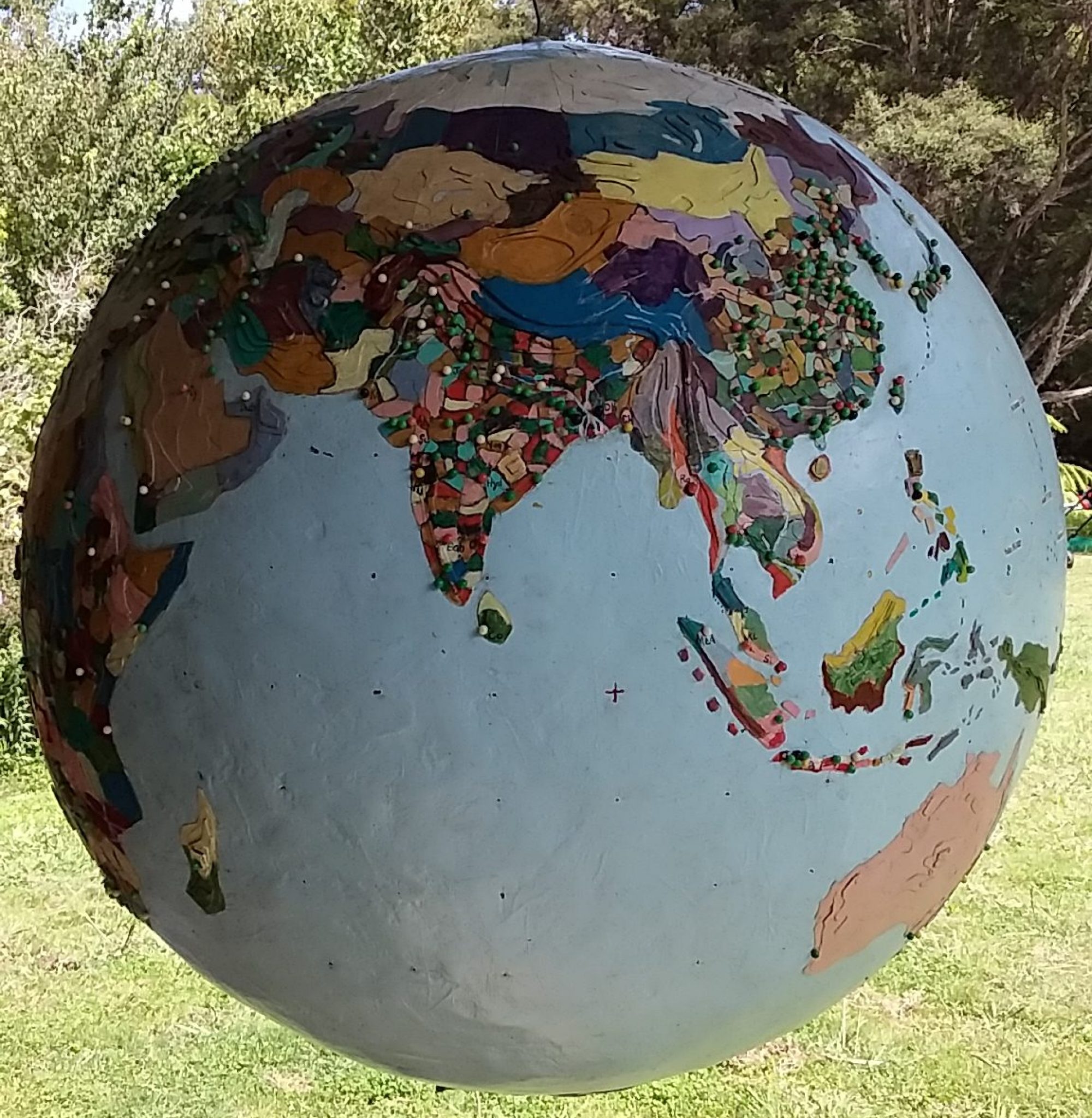Kejawen is the name I’ve given to the millisphere in south central Java which spreads from Cilacap, in the south-west, to the holiest place in ancient Hindu Java, the Dieng plateau, in the north-east.
I’ve passed through the “rice basket of Java” twice. The first time from Yogyakarta to Bandung by train. It appeared densely populated and highly productive.
Kejawen is differentiated from the north coast of Java by a line of volcanoes running east west. In the Indonesian language Kejawen means “Javaism”, and along with Yogyakarta and Surakarta, Kejawen is the essence of the Javanese culture which is described as having Animist, Hindu, Buddhist, and Islamic layers.
On the east fringe of Kejawen and at the heart of “Javaism” are, the world’s largest Buddhist complex (Borobudur), and the world’s largest Hindu complex (Prambanan), both built of carved stone. Buddhist/Hindu competition is part of Kejawen history, and is retained in rituals, fasting and meditation.
Islam has only been in Java since 1500. It came in on the north coast, not long before the Portuguese arrived. The arrival of Islam did lead to the collapse of the old dynasties, to be replaced with sultanates, but the music, dance and art remained the same and the old gods lived on in Kejawen culture.
On the second trip we went the other way. Starting at the beach at Pangandaran we chose to travel on the day when millions of Indonesians travel home to their family for the festival of Idul fitri, at the end of Ramadan.
After a couple of hours of rat-running in an SUV through bad back roads we were dropped at a station, somewhere north of Cilacap, which is the only deep water port on the Java’s south coast.
Cilacap is where the Dutch fleeing the Japanese invasion launched from. Australia gave them a better welcome than today’s boat people receive.
Cilacap has a geothermal power plant, cement works and a huge oil refinery. The beaches are polluted and tourists are steered to nearby Nusa Kambangan (the Alcatraz of Indonesia). Tourist resorts on pristine tropical beaches share the island with a maximum security prison, where capital punishment is carried out.
Kambangan is where the Bali bombers and other terrorists met their maker, and foreign drug traffickers from Australia, the Netherlands, Philippines and Brazil have been executed. There is an American currently on death row there.
Originally built by the Dutch, Kambangan was one of the harshest in Asia, and is now used to keep political prisoners as well as murderers and drug gangsters. Tommy Suharto, the son of a past president, was detained there for masterminding the murder of a judge who had sentenced him for corruption.
The ticket seller looked nervous as our minder set us up in an air-conditioned waiting room. Hundreds of Indonesians waited outside. When the train pulled in I couldn’t see how any more people could get in, but somehow we were shoehorned in.
Because there were no seats, we stood in the aisle with our baggage, and a lot of other people. Food sellers worked the aisle, which they regarded as their territory, and standing passengers had to get out of their way, regularly. A trio of buskers came through just like it was an ordinary day at work. They were memorable because they had a girl singer in western style – no hijab. Busking is tough and usually only for the boys. A boy with deformed legs, shuffled through at floor level picking up the rubbish, which he later threw out an open window into a paddy field.
Five hours later we disembarked at a crowded siding. At the nearest warung I celebrated being able to sit down with a kopi susu and an Indonesian clove cigarette as school kids practiced their English language skills on us.
A student from the warung joined us on the bus to Wonosobo up in the hills. She wore a uniform and a white hijab and as the bus climbed a forested ridge she asked earnest questions about Zeelandia Baru (New Zealand). Yes we have volcanoes in New Zealand too, I told her. In the distance pale blue silhouettes of volcanoes disappeared into a smoky tropical sunset.
